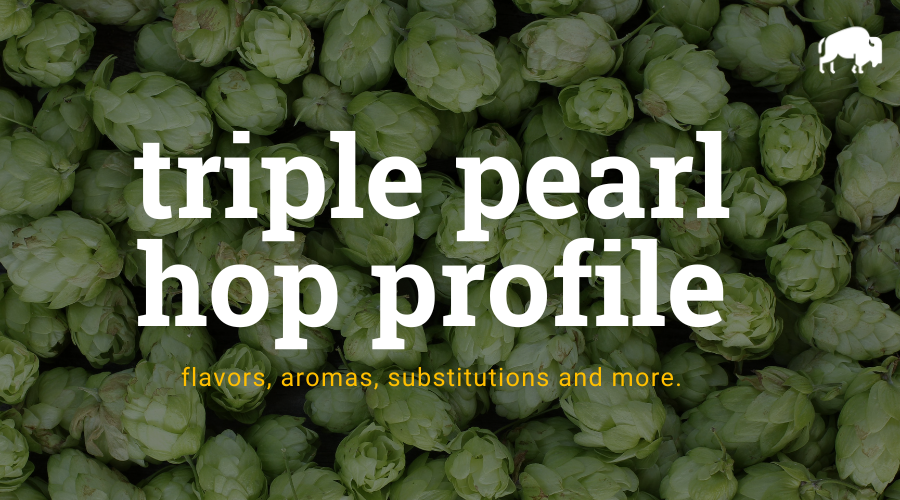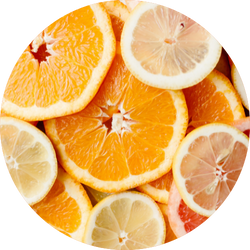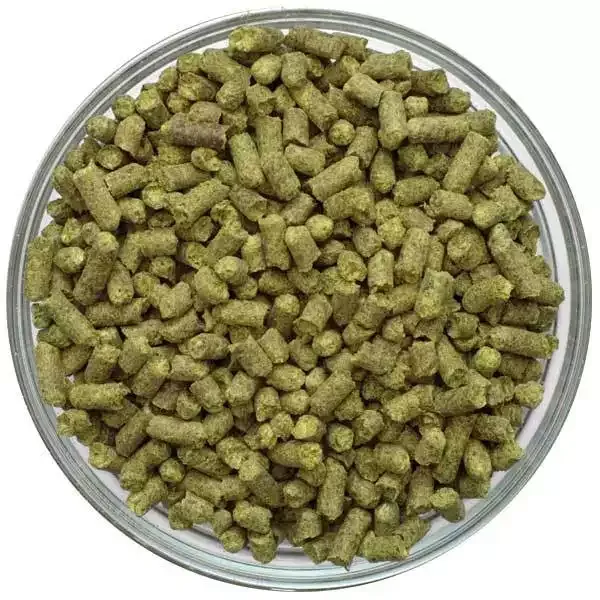
Triple Pearl hops, a relatively new variety to the brewing scene, were developed by crossing Perle hops with a unique, proprietary hop variety. This versatile hop owes its roots to the USDA-ARS Hop Breeding and Genetics Program. It was first released publicly in 2013.
The flavor profile of Triple Pearl hops is characterized by a well-balanced mix of floral, fruity, and spicy notes, accompanied by a moderate to high alpha acid content (ranging from 10.5% to 13.5%). Triple Pearl hops can be used for bittering and aroma additions, providing a clean and smooth bitterness with a lingering, complex aroma.
Given the versatility of Triple Pearl hops, they are well-suited for use in American IPAs, Pale Ales, Lagers, Pilsners, and Belgian-style ales.
| Usage: | Dual-Purpose |
| Country of Origin: | United States |
| Hop Growers Code: | TRP |
Where To Buy TriplePearl Hops
TriplePearl Flavor And Aroma
TriplePearl is a dual-purpose hop that is often described to have the following aroma characteristics:

black pepper, cedar, sandalwood, spicy

floral

orange, citrus, zest
TriplePearl Hop Oil Breakdown
Hop oils can vary from year to year and farm to farm but based on our research, here are the typical values we have seen reported. This information comes from various hop farms, The Hop Aroma Compendium, and For The Love Of Hops.
| Alpha Acid % (AA) Alpha acids are what is isomerized when boiling to create bitterness in beer. | 10% – 13.5% |
| Beta Acid % Beta acids are what give hops their more aroma and flavor compounds. | 3.3% – 4.2% |
| Alpha-Beta Ratio This ratio of alpha acids to beta acids determines how quickly bitterness fades during aging. Lower ratios are common for aromatic varieties. | 2:1 – 3:1 |
| Co-Humulone as a % of Alpha Higher numbers are said to impart a harsher bitterness. | 21% – 55% |
| Total Oils (mL/100g) With more total oils, typically comes a more complex hop profile but these are highly volatile compounds. | 0.8mL – 1.8mL |
| Myrcene green, resinous | 39% – 55% |
| Humulene woody, piney | 7% – 11% |
| Caryophyllene woody | 3% – 5% |
| Farnesene floral | 0% – 1% |
| Other Oils: Includes beta-ionine, beta-pinene, limonene, linalool, geranoil & selinene | 28% – 51% |
| Hop Storage Index (HSI) The HSI indicates the percent of alpha and beta acids lost after 6 months of storage at room temperature (68°F or 20°C). | Retains 72% of its alpha acid after 6 months of storage at 20ºC (68ºF). |
| Hop Storage Index (HSI) Rating | Good |
TriplePearl Hop Substitutions
Replacing one hop for another is seldom straightforward but sometimes you don’t have the right hop or the right quantity of hops for the beer you want to make. For those situations, we have made a comprehensive list of hops to substitute on brew day.
These substitutions aren’t perfect as hop chemistry is pretty complex.
We wanted to make this list of substitutions with varietals that are easy to find when possible. For TriplePearl, we recommend substituting with the following hops:
Beer Styles
For the most part, any hop could have a place in just about any beer style. Based on popular beers, historical usage, and our own preferences, we would recommend using TriplePearl for IPA, New England IPA, Pale Ale, Wheat Beer, Golden Ale. That being said, experiment and see what works best for you.
References
https://www.hopslist.com/
https://www.ars.usda.gov/
https://www.brewersassociation.org/
https://www.barthhaasx.com/
https://www.yakimachief.com/
Hieronymus, Stan. For The Love of Hops. Brewers Publications, 2012
The Hop Aroma Compendium. 2012


